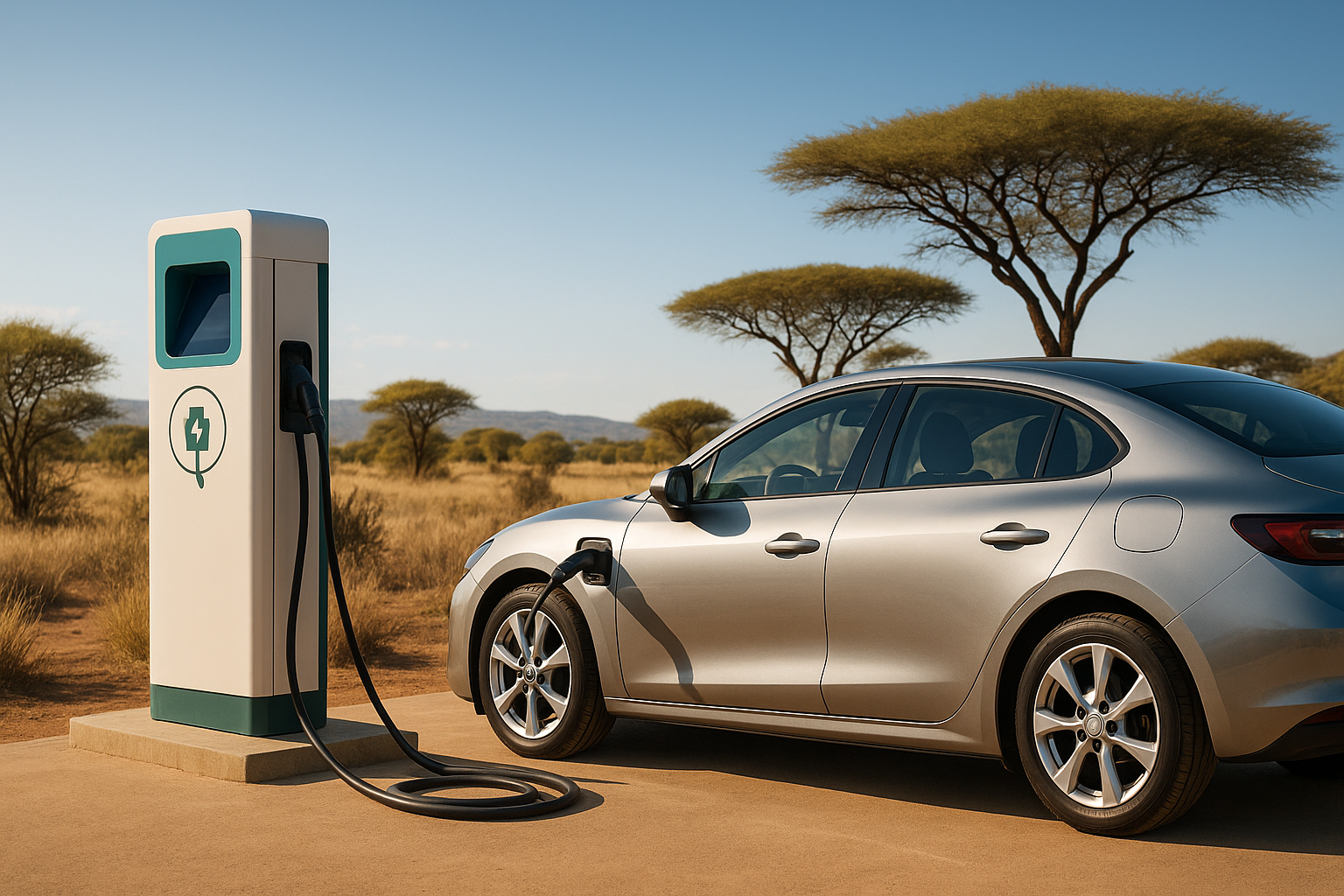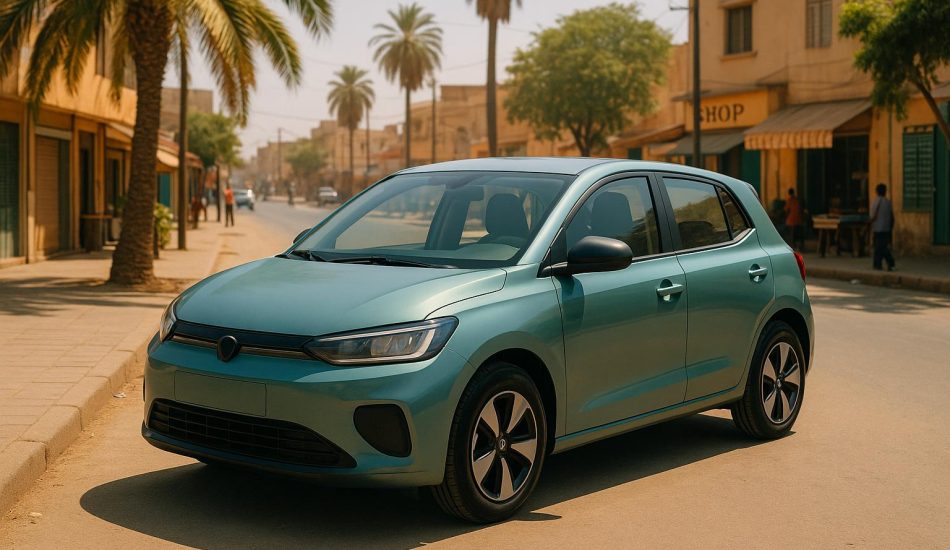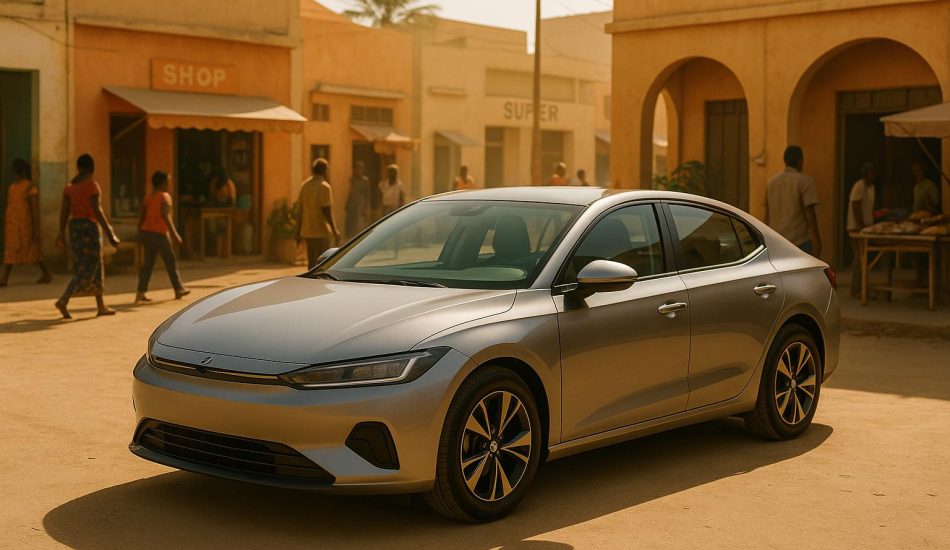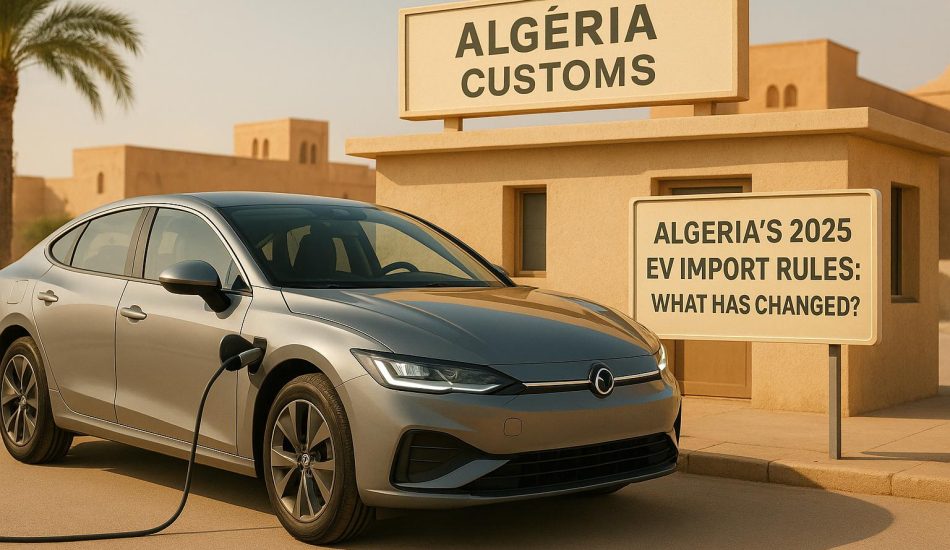
Electric vehicles (EVs) in Southern Africa are gaining attention but remain far from mainstream. South Africa leads the region in EV adoption, mainly in the premium segment, while neighboring countries like Botswana, Namibia, and Zimbabwe are still in early stages. Challenges such as high costs, limited charging networks, and policy gaps slow progress. However, declining battery prices, government incentives, and growing interest in EVs for commercial use signal potential for growth. Expanding charging infrastructure, offering affordable EV models, and educating consumers are key to accelerating adoption. Urban areas are likely to lead, but rural regions need more investment to catch up.
Market Data and Future Growth Forecasts
EV Sales Performance Across Southern Africa
In Southern Africa, South Africa takes the lead in electric vehicle (EV) registrations. This is largely due to its more advanced automotive infrastructure and higher consumer purchasing power, which have encouraged a stronger uptake of EVs compared to its neighbors. Most of the current sales are in the premium segment, suggesting that broader adoption could follow as more affordable EV models enter the market. This early interest provides a foundation for examining which vehicle categories are driving growth.
Vehicle Types Leading Market Growth
Passenger vehicles are currently the top sellers in the EV market, but commercial vehicles are starting to gain attention, especially for their cost-saving potential. Urban fleet operators in sectors like delivery and ride-hailing are increasingly turning to EVs to cut operating costs. Additionally, some major cities are beginning to integrate electric buses into their public transportation systems, which could help lower emissions and reduce long-term expenses. However, light commercial vehicles remain a smaller part of the market, highlighting an area with potential for future expansion as technology continues to improve.
When EVs Will Reach Mainstream Adoption
Looking ahead, forecasts suggest that EVs will achieve widespread adoption in the coming decades. Key factors driving this shift include declining battery costs, expanded charging networks, and supportive government policies. In South Africa, targeted policy measures to make EVs more affordable could speed up this transition. Neighboring countries, meanwhile, may follow suit as they address economic and infrastructure hurdles. Efforts to create a regional charging network and align policies could further accelerate the move toward mainstream EV adoption across Southern Africa.
Government Policies and EV Incentives
EV Support Policies by Country
Several nations in Southern Africa have rolled out policies aimed at boosting electric vehicle (EV) adoption. Some have introduced strategic plans to encourage local EV manufacturing, integrate renewable energy sources, and cut down on fuel imports. Meanwhile, other countries are still weighing their options as part of broader efforts to diversify their economies.
Tax Breaks and Financial Incentives
To make EVs more affordable, governments in the region have explored various financial incentives. These include reducing import duties, offering tax credits to businesses, and providing rebates for individual buyers. However, the specifics of these incentives differ from one country to another, and implementing them has proven to be challenging.
Policy Gaps and Implementation Problems
Although initial steps have been taken, the lack of clear timelines and standardized regulations – particularly for charging infrastructure – has created uncertainty for investors and manufacturers. Inconsistent policies, insufficient funding, and requirements for domestic manufacturing have further complicated efforts to accelerate EV adoption across the region.
Charging Infrastructure and Technology Challenges
Charging Station Network Expansion
One of the biggest hurdles to widespread EV adoption is the limited availability of charging stations, especially outside major urban centers. While cities may offer a growing number of public chargers, rural areas often have few, if any, options. This lack of access creates a barrier for drivers who need to travel longer distances, amplifying concerns about driving range and convenience.
High installation costs and complex regulatory requirements further slow down the expansion of charging networks. These challenges make it difficult to build the infrastructure needed to support a growing number of electric vehicles.
Battery and Energy Technology Progress
Recent advancements in battery technology are starting to address some performance concerns – particularly in regions with extreme climates. For example, improved lithium-ion batteries now deliver better results in high-temperature environments, which is a crucial step forward for areas with demanding weather conditions.
Local battery assembly is also gaining traction, aiming to reduce costs and secure a more reliable supply chain. However, the region still depends heavily on imported battery cells, leaving it vulnerable to global supply disruptions.
Solar-powered charging stations are being explored as a renewable energy solution. While promising, these stations require significant upfront investments and improvements to grid reliability. Frequent power outages, such as those caused by load shedding, further complicate their implementation. Some innovative ideas, like mobile solar-powered charging units, are being tested, but they remain small in scale. Additionally, vehicle-to-grid technology, which could help stabilize the power grid, depends on the broader adoption of smart grid systems – something that is still in its early stages in many areas.
Even with these advancements, the lack of robust infrastructure continues to pose a significant challenge.
Regional Infrastructure Obstacles
The rollout of charging networks faces major obstacles due to aging power grids, limited rural connectivity, and delays in importing necessary equipment. In rural areas, where grid access is often sparse, diesel generators are frequently used as a stopgap, driving up costs and adding to environmental concerns.
Inconsistent standards across regions further complicate the development of a cohesive charging network. Differences in electrical systems, payment methods, and safety regulations make it difficult to create a seamless, cross-border charging experience. Urban areas may see gradual improvements over time, but rural regions are likely to lag behind, widening the gap in access to EV infrastructure.
These infrastructure and regulatory challenges highlight the need for coordinated efforts to build a more reliable and accessible charging network.
Consumer Attitudes and Adoption Barriers
What Consumers Want from EVs
In Southern Africa, consumers are clear about their expectations for electric vehicles (EVs): they want them to be affordable, dependable, and capable of traveling long distances. Affordability tops the list, as buyers expect EVs to be priced competitively with gasoline-powered cars. Unfortunately, the current price difference between the two remains a major hurdle.
Another key demand is extended range. Many drivers need EVs that can handle long trips, especially between urban and rural areas. Fast charging is also high on the wishlist, with consumers seeking charging times that match the convenience of filling up a gas tank.
Variety in vehicle options is another important factor. Buyers are looking for everything from compact city cars to spacious SUVs that can handle family needs and diverse road conditions. However, the limited selection of EV models available in Southern Africa often leaves consumers without suitable choices.
Reliability and strong service support are equally critical. People want confidence that their EVs will perform well, even in tough local conditions. They also expect easy access to maintenance services and spare parts to ensure their vehicles remain in good shape. These demands underscore the challenges consumers face when considering EVs.
Main Obstacles to EV Adoption
Several barriers are slowing the adoption of EVs in Southern Africa. High upfront costs remain a significant deterrent, with limited financing options making the situation worse. Many financing models fail to account for the long-term savings that EVs can offer, further discouraging potential buyers.
Another major issue is the lack of a reliable charging network. For those who don’t have access to home charging, relying solely on public chargers can be inconvenient and unreliable, making EV ownership less appealing.
Public awareness is another challenge. Many people still hold outdated views about EVs, including doubts about their performance, maintenance needs, and overall value. These misconceptions erode consumer confidence and slow adoption.
Additional hurdles include the impact of import duties and taxes, which drive up EV prices, as well as infrastructure limitations. Economic factors like currency fluctuations add further complexity, making imported EVs even less affordable. Addressing these issues will require targeted efforts to reshape the market.
Methods to Speed Up EV Adoption
Tackling these barriers calls for specific, actionable strategies. For instance, introducing financing options like lease-to-own programs or battery rental schemes could make EVs more accessible by spreading out costs and emphasizing their long-term savings.
Expanding charging infrastructure is another priority. Public-private partnerships, combining government support with private sector expertise, could help grow the network. Workplace charging programs could also provide a reliable solution for many drivers.
Education campaigns are equally important. Raising awareness about EV benefits and dispelling myths can go a long way. Initiatives like extended test drives or sharing success stories from early adopters can help potential buyers feel more confident about making the switch.
Other strategies include standardizing charging systems and safety regulations across the region to simplify cross-border travel and reduce costs. Building local expertise in EV maintenance can improve service support while creating new job opportunities. Finally, revising tax policies – such as lowering import duties on EVs and related equipment – could help level the playing field and make EVs more affordable for consumers.
sbb-itb-99e19e3
Are electric vehicles actually selling in South Africa? EV and hybrid sales stats 2024
How Online EV Marketplaces Drive Adoption
Online marketplaces are making it easier for people across Southern Africa to discover, research, and purchase electric vehicles (EVs). These platforms are tackling some of the biggest hurdles to EV adoption by providing easy access to information, streamlining the buying process, and connecting buyers with trusted sellers. This digital approach complements broader efforts in the region, such as improving market data, introducing supportive policies, and enhancing infrastructure.
Making EV Information and Pricing Clear
One of the main challenges for potential EV buyers in Southern Africa is the lack of clear, accessible information about available models, specifications, and pricing. Traditional dealerships often have a limited selection of EVs, making it tough for consumers to compare options or understand the full cost of ownership.
Platforms like EV24.africa address this issue by offering detailed listings of new and used EVs from major brands. Each listing includes comprehensive specifications and transparent pricing, helping buyers make informed decisions without the guesswork.
Financing is another barrier for many buyers, and EV24.africa simplifies this by offering financing options directly on the platform. Buyers can explore monthly payment plans and assess the total cost of ownership, allowing them to weigh long-term savings against the higher upfront costs of EVs.
For sellers, the platform provides flexible listing options. Individual sellers can use free basic listings, while automotive businesses can opt for custom-priced dealer plans that include enhanced branding and analytics. This flexibility ensures a steady supply of vehicles and promotes competitive pricing across the marketplace.
Supporting Buyers with Education and Service
Online EV marketplaces aren’t just about selling cars – they also play a critical role in educating buyers and addressing common misconceptions about EVs.
EV24.africa offers expert service support, customer reviews from real EV owners, and detailed technical information about battery capacity, range, and charging features. This helps potential buyers better understand what they’re purchasing and sets realistic expectations for EV ownership.
For buyers in rural or suburban areas, nationwide delivery services make EVs more accessible. This is especially important in regions without local EV dealerships, ensuring that high-quality electric vehicles are available to consumers regardless of their location.
Building Stronger EV Market Networks
These platforms are also helping to strengthen the broader EV ecosystem. By connecting manufacturers, buyers, and sellers, online marketplaces like EV24.africa create a more interconnected network. Aggregating demand across the region gives automakers valuable insights into consumer preferences and regional trends, which can inform future product development and even influence policy decisions to accelerate EV adoption.
Standardized pricing and service expectations established by these platforms build consumer trust and encourage healthy competition among sellers. Additionally, dealer verification processes ensure buyers receive reliable service, including post-purchase maintenance and warranty support – addressing a common concern for first-time EV owners.
Southern Africa’s Path to Mainstream EV Adoption
Southern Africa’s electric vehicle (EV) market is on the brink of significant growth, thanks to increasing government support, infrastructure development, and the rise of digital platforms that improve access and awareness.
To ensure progress, governments need to maintain consistent tax incentives and reduce import duties, while also prioritizing the expansion of charging networks in rural areas. These measures address key challenges, such as limited infrastructure and affordability, which have slowed adoption so far.
Consumer education is another critical piece of the puzzle. Misconceptions about EV reliability and costs remain widespread, and targeted efforts are needed to dispel these myths. Digital platforms can play a key role here, connecting diverse markets across the region and providing easy access to crucial information.
While urban areas are likely to lead the way in adopting EVs, financial barriers remain a challenge. EV prices need to become more competitive with gasoline-powered vehicles to drive widespread adoption. The growing market for used EVs, however, is already making these vehicles more accessible to a broader audience. This shift, combined with the potential to utilize the region’s wealth of solar and wind energy, could significantly reduce emissions and dependence on fuel imports.
To keep the momentum going, all stakeholders must work together. Manufacturers should prioritize producing affordable models, governments need to enforce consistent policies, and digital platforms must extend their reach to underserved communities. These combined efforts could create a more inclusive and sustainable future for EVs across Southern Africa.
FAQs
What challenges are slowing the adoption of electric vehicles in Southern Africa, and how can they be overcome?
The shift to electric vehicles (EVs) in Southern Africa comes with two big hurdles: limited charging stations and the steep price of EVs. In many regions, the lack of a reliable charging network makes owning an EV inconvenient. On top of that, high import duties and taxes drive up prices, putting these vehicles out of reach for most people.
To overcome these obstacles, a mix of solutions is needed. Expanding charging infrastructure through both public and private investments is a key step. Governments could also help by offering subsidies or tax breaks, making EVs more affordable to a broader audience. Encouraging local production and improving infrastructure could further bring costs down and speed up adoption. By addressing these issues, Southern Africa could open the door to a cleaner, more accessible future for electric vehicles.
What role do government policies and incentives play in the adoption of electric vehicles in Southern Africa?
Government Policies and Incentives Driving EV Adoption in Southern Africa
Government policies are playing a key role in encouraging the growth of electric vehicles (EVs) in Southern Africa. Take South Africa, for instance – manufacturers there benefit from a 150% tax deduction on investments in EV and hydrogen vehicle production. This move not only attracts manufacturers to set up shop locally but also strengthens the country’s industrial base.
On top of that, the South African government has committed $54 million to support EV and battery manufacturing. The goal? To lower production costs, make EVs more accessible to consumers, and speed up the industry’s expansion.
These efforts aim to tackle common hurdles, such as affordability and infrastructure, while positioning South Africa as a key player in the EV market. By reducing barriers and encouraging industrial growth, these policies are helping to make EVs a more practical option for the region.
How do online marketplaces help boost electric vehicle adoption in areas with limited local dealerships?
Online marketplaces are playing an important role in expanding access to electric vehicles (EVs), especially in areas where local dealerships are few and far between. These platforms offer potential buyers a wider range of EV models, detailed product descriptions, and clear pricing. This wealth of information helps people feel more confident and informed when considering an EV purchase.
What sets these platforms apart is their ability to facilitate direct-to-consumer sales. By cutting out the need for traditional dealerships, they make the buying process smoother and more convenient. Shoppers can browse and compare EVs right from their homes, eliminating the hassle of traveling long distances to visit a dealership. By closing the gap between consumers and EV options, online marketplaces are making it easier for people in underserved regions to join the shift toward electric mobility.




